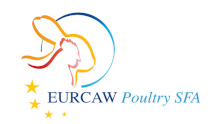Document type: scientific review published in Animals
Authors: Aleksandar Cojkic, Jane M. Morrell
Preview: Animal welfare is a complex subject; as such, it requires a multidimensional approach with the main aim of providing the animals with the "five freedoms". The violations of any one of these freedoms could have an influence on animal wellbeing on different levels. Over the years, many welfare quality protocols were developed in the EU thanks to the Welfare Quality® project. Unfortunately, there is a lack of such summarized information about bull welfare assessment in artificial insemination stations or about how disturbed welfare can be reflected in their productivity. Animal reproduction is the basis for the production of meat and milk; therefore, factors contributing to reduced fertility in bulls are not only indicators of animal welfare but also have implications for human health and the environment. Optimizing the reproductive efficiency of bulls at an early age can help to reduce greenhouse gas emissions. In this review, welfare quality assessment will be evaluated for these production animals using reproduction efficiency as a key area, focusing on stress as a main effect of poor animal welfare and, thereby, reduced fertility. We will address various welfare aspects and possible changes in resources or management to improve outcomes.




